| The Cosmic Hunter | ||
| Kip S. Thorne, who revolutionised astrophysics, sexed up time travel and mesmerised Hollywood, is in town to give a talk. Prasun Chaudhuri spoke to him | ||
When astrophysicist Kip S. Thorne looks into a clear, night sky he doesn't think about what he can see — stars, planets and galaxies — but rather on what he can't. What appears to be a blank void to most of us, is the oft-rumpled fabric of universe to him. It bends, stretches, and squeezes as objects move through it — just like small ripples are created on the calm surface of a lake when we dip a finger in the water. He calls this view "the warped side of the universe". For four decades, Thorne, one of the leading experts on the astrophysical implications of Einstein's general theory of relativity, has been opening new windows to the universe for scientists and lay people alike. As the Feynman Professor of Theoretical Physics (emeritus), at the California Institute of Technology (Caltech), where he has taught since 1966, Thorne is widely known for mentoring over 50 PhD scholars who went on to become great scientists. Tomorrow Thorne will deliver the silver jubilee lecture of the S.N. Bose National Centre for Basic Sciences (SNBNCBS) at the Science City auditorium in Calcutta. "I'll talk about the warped side of our universe — objects and phenomena that are made of warped space and warped time, instead of from matter," he told KnowHOW in an interview. Thorne is one of the pioneering scientists whose quest is to unravel the mystery of this warping. And he was the one who kick started the race to detect ripples from the most massive events in the universe: spinning, orbiting, exploding or colliding ultra-dense objects like black holes and neutron stars. In 1918, Albert Einstein predicted these cosmic events would radiate a propagating distortion of space and time: gravitational waves. He says, "To detect the gravitational waves we started Laser Interferometer Gravitational Wave Observatory (LIGO) in 1989. We built initial detectors with (Caltech physicist) Ron Drever and then we upgraded this to an advanced detector." Says Sandip Chakrabarti, dean, SNBNCBS, "The first concrete proof that gravitational waves exist will not only verify a key tenet of the relativity theory, but provide unprecedented insight into the mysterious lives of black holes, cosmic strings (string-like objects believed to have formed in the early universe) or even tiny ripples in spacetime in the early universe which later became galaxies and other large structures." Chakrabarti happens to be one of the scientists (a faculty fellow) mentored by Thorne at Caltech when LIGO started. The colossal $365-million detector set up across Louisiana-Washington in the US, however, has failed to detect the mysterious waves so far. The fruitless search over the past two decades, at great expense to the public purse, has raised questions whether the existence of these waves is entirely theoretical. But Thorne and his colleagues don't want to give up the hunt just yet. He says, "The experiment is extremely difficult. We've revised the design of LIGO to filter out background noise so that we can observe the unique signatures of a gravitational wave." He expects to "see a rich variety of gravitational waves by 2017".
His obsession with LIGO veered him away from another interesting research that may have led scientists to a time machine as envisaged in science fiction. In the 1980s not only did he suggest that time travel might be possible, but was the first to conduct scientific research on the premise that time travel might be possible by passing through a thing called wormhole. "It's like a worm drilling a hole through an apple from one side to the other. A hypothetical tunnel in space that links one place in our universe to another theorised by general relativity." Wormholes led his interest to time travel in the 1980s when Carl Sagan — astronomer and sci-fi writer — sought his advice on how to make the heroine of his novel Contact fly across distant stars without losing on time. Sagan wanted her to travel through a black hole and come out somewhere else, but Thorne protested as fundamental laws of physics forbade it. So he suggested Sagan introduce wormhole as a means of time travel. That also got him to explore whether there really could be wormholes that one could travel through. He wrote extensively about the musings in his 1994 bestseller Black Holes & Time Warps: Einstein's Outrageous Legacy. He says, "Time travel was one of my important works from 1988 to 1994, until I got engrossed with LIGO. We are sure that the very process of trying to travel to the past would destroy the machine by a phenomenon called quantum fluctuations. Till we have a complete theory of quantum fluctuations, we will not have the technology to detect time travel." Although he abandoned the research on time travel, the project lured Hollywood director Steven Spielberg to make a film out of it. He says, "I'm collaborating with Steven on the sci-fi film Interstellar. It is the story in which the warped side of the universe plays a major role and will probably be released in Christmas 2014." However, he doesn't want to reveal anything more on the story line because he has signed a non-disclosure agreement with the studio. Two years ago Thorne resigned from his full-time job as a professor to make more time for writing, movies and research. Right now he is authoring a textbook on classical physics based on his academic career that took off in the golden era of astrophysics in 1958. "Physicists like John Wheeler and Chandra (Subrahmanyan Chandrasekhar) influenced me very much. Chandra worked entirely from a mathematical point of view. He could see patterns in mathematics which no one else could see." Looking back he has no regrets, but he would love to see the detection of gravitational waves in his lifetime. "I want to see the details of the properties of black holes through gravitational waves. The detections of these waves would be the most important signature of the existence of blackholes and a whole lot of cosmic treasures," he says. |
Current Real News
7 years ago





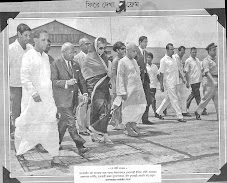



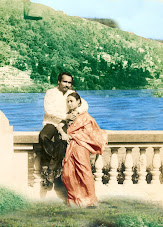






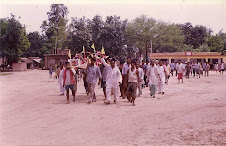

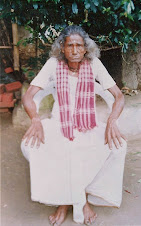
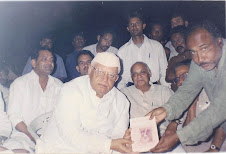
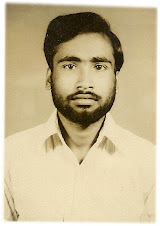



No comments:
Post a Comment